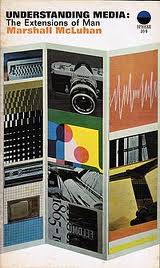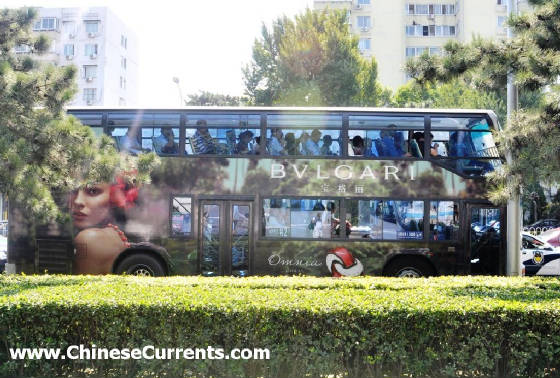|
The medium, the message, and the sausage dog

|
| Sausage dog or badger hunter... what say you? |
Every so often, while wandering around Beijing (or any place for that matter)
you see something that just doesn't add up. Recent examples that spring to mind include: a Rolls-Royce in a cycle
lane; a washing line of clothes forming a "living art" extension to a graffiti-covered wall of a
soon-to-be-demolished house [photo here]; and a sausage dog sitting in a toddler's push chair. At first glance, the dog looked ridiculously out of place. But the more I looked at it the
more it seemed to belong there. If a thought bubble were etched into the photograph, it would say something like "Why are you laughing?", not "I know... this is really embarrassing". The funny thing is that, up until I
had seen the dog in the push chair, I had not used or thought about "sausage dog" for decades. On
the few occasions I've had to describe one, I've always referred to it as a "dachshund"; which is of course
a name that has far more street cred than sausage dog. The German name evokes something that is seriously business-like
and which shouldn't be messed around with. Appropriately
so, because dachs is German for badger. So the dachshund is literally the "badger hound".
In other words, it was a dog that went where other dogs feared to go. No hole was foreboding. It just
went in... and invariably dragged out the much bigger, striped occupant of the hole in its vice-like jaws.
It's bravery, ferocity and tenacity as a badger hunter was the stuff that tales around the camp fire were made of.
A strapping six-footer would walk with pride with his badger hound at his side. So, what went wrong? At what point did the Dachshund brand disappear down the wrong hole? The answer lies in the power of a
medium and the vulnerability of its message. In World
War 1, American and British owners of dachshunds were under the cosh. The hapless dachshund was being torn to shreds
in the medium of political cartoons, in which its image was used as a metaphor for all things German.
Unluckily for the breed, Kaiser Wilhelm II had a pair of dachshunds. In an early validation of the adage that an
owner and dog have similar characters, the Kaiser chose Wadl and Hexl to be his pets. The two dachshunds had a particularly mean streak and, presumably growing tired of badgering badgers,
they attacked and killed a precious golden pheasant [all the way from western China I hasten to add] that belonged
to Archduke Franz Ferdinand, while on one of their master's state visits. After the Archduke had been dispatched to join his beloved pheasant and war eventually
broke out, the dachshund's image was so derided that many fearful owners renamed the breed "liberty hounds"
(at the same time, sauerkraut was rechristened "liberty cabbage"). The satirical
attacks on the breed continued into World War II (Field Marshall Rommel was an infamous owner). In the 1950s, Pablo Picasso's beloved dachshund, "Lump", helped to put the breed back into
the public's good books, but his minimalist sketch of Lump depicted a body so stretched that it contributed
to the emasculation of the once-proud badger hunter. Later,
Andy Warhol's companion (and spokesperson), Archie the sausage dog, would further increase the perceived quirkiness of
the breed and its owners. The final nail in the coffin of the "badger hound" came in 1993 when Paul
de Vries and Murray Weinstock released a song with the chorus: Dachsie, meine dachsie,
The best canine under the sun,
Call you "wiener" or "sausage"
or "hotdog",
We know that you're number one. Thankfully I missed that song; and when Warhol was painting Archie, I was more into pop music than pop art.
When Lump was around I wasn't even born. Despite my lack of exposure to these messages I, too, called
them "sausage dogs" when I was a kid. For no other reason, though, than other kids called them
that. As funny as it may have seemed at the time, the
name (and associated imagery) wasn't fixed in mind. So when I got older, the message simply became unstuck
and was replaced by another thought. Until, that is, I saw the dog in the push chair. The medium (push-chair)
overpowered the message (dachshund) and replaced it with another message (sausage dog). As well as overpowering (and supplanting) a message, a medium can also reinforce
a message. Someone who has only ever thought of it as a "sausage dog" would nod their head at the above photo. With regard to reinforcement, if I could move from a luxury breed to a luxury
brand for a moment: In 2011, Bulgari managed to significantly
reinforce its brand message here in China when it staged a stunning exhibition of 600 pieces of jewellery at the highly-prestigious
National Museum in Beijing. As well as reinforcing Bulgari's message of "..unmistakable creativity that transcends
time..", the medium of the exhibition (entitled "125 years of Italian Magnificence") also did
a great job for Brand Italy.

|
| "The medium is the message" |
Understanding media, The Extensions
of Man by Marshall McLuhan was published in 1964, the year that Elizabeth Taylor wore her Bulgari brooch at
the Lido in Paris. And with
it the thought that "The medium is the message" was introduced to the world. This is how McLuhan introduced the idea in the book: "In a culture like ours, long accustomed to splitting and dividing all things as a means of control,
it is sometimes a bit of a shock to be reminded that, in operational and practical fact, the medium is the message. This is
merely to say that the personal and social consequences of any medium—that is, of any extension of ourselves—result
from the new scale that is introduced into our affairs by each extension of ourselves, or by any new technology." In other words, and
to use an example from that day, wearing a priceless brooch in a turban at the Paris Lido (as an extension of herself), and
outshining Aristotle Onassis in so doing, was a medium (or an extension of Elizabeth Taylor) so powerful that
it became her message (ie I'm the biggest star). The conveyance of that image via the mediums of television and magazines
further reinforced the "undisputed biggest star" message. As well as 1) the "Taylor trumping
Onassis" and "the sausage dog trumping the dachshund" examples of the medium becoming the message (by supplanting
a less-sticky message); 2) the Bulgari exhibition example of the medium reinforcing the message; 3) the badger hound
example of the medium undermining the message; there's also 4) the Bulgari double-decker bus example of the medium simply
spreading the message. At first sight, though, the double-decker bus with
a complete Bulgari advertising wrap had me scratching my head. I was so taken aback that I had to run after it to get
better photographs. How could, I wondered, such a highly-prestigious brand... the epitome of Italian magnificence no
less... use a bus wrap... in Beijing of all places (a place not famous for the quality of its public buses). But, after catching the bus up, it was clear that
the wrap was actually advertising a perfume from Bulgari (costing a few hundred yuan) not a piece of Bulgari jewellery (requiring
several sack-fulls of yuan). The perfume, Omnia Coral [Chinese website here], is Bulgari's "accessible luxury" sub-brand [my description, not theirs]. On Taobao, which is by far the
biggest online direct-purchase site in China, it is being advertised today for as little as 225 yuan (about US$36,
or GBP22.50). Therefore, on its route in central Beijing, the "Bulgari bus" would be seen by countless numbers
of people who could afford to buy it. It's also important to
look at the medium within the medium [with a nod to McLuhan, who wrote that the "...'content' of any medium is always
another medium]. In the case of the Bulgari bus, the wrap is stylishly done and the model looks like she commands
a fee with three more zeros than some of the models you see plastered across Beijing's buses. No matter what
you might think about the artwork, though, it's hard to argue that it doesn't stand out. Which is not a bad
thing considering that most of the people who see it and can afford to buy a bottle of the Bulgari perfume advertised,
are not likely to be aware of it. Nor are they, for that matter, likely to know very much about the mother brand. But what about the chap in his early-30s and his girlfriend in the BMW 7 series, stuck
behind the bus in one of Beijing's infamous traffic jams? Two people who probably know about Bulgari jewellery,
who are perhaps also potential purchasers of a Bulgari wedding ring. What would their thoughts be? It would be
good to test the hypothesis that they wouldn't mind in the slightest. In China, people who have loads of money
and a good awareness of the luxury category know that Chanel Number 5 is not in the same league as a Chanel
little black dress. Thanks to Bulgari's recent advertising, they are also becoming aware that Bulgari Omnia Coral is
in a different league to a Bulgari brooch. They also know that buying
a piece of Bulgari jewellery would give them full membership of the Bulgari club, while the Bulgari perfume
comes only with an associate membership. What's more, the more associate members there are, the more prestigious
full membership becomes. As far as media is concerned:
In 1964, people listened to the radio, watched TV, went to the cinema, made telephone calls, wrote letters, sent
telegraphs, and read newspapers and magazines. As everyone is well aware, "digital" is fast becoming the
single medium for all of those things. One thing won't change though: The message (affected or unaffected
by the medium) will always be of paramount importance. McLuhan's following
observation rings as true today as it did in 1964 and 1594: "A fairly complete handbook for studying the extensions of man could be made up from selections
from Shakespeare. Some might quibble about whether or not he was referring to TV [or the Internet] in these familiar
lines from Romeo and Juliet: 'But soft! what light through yonder window
breaks? It speaks, and yet says nothing'." Some
things never change. This article was written on the 19th October 2012, and
revised on the 3rd March 2019 to date the ["2011"] Bulgari exhibition in Beijing, and to add the last line.

|
| Room for more |
|

